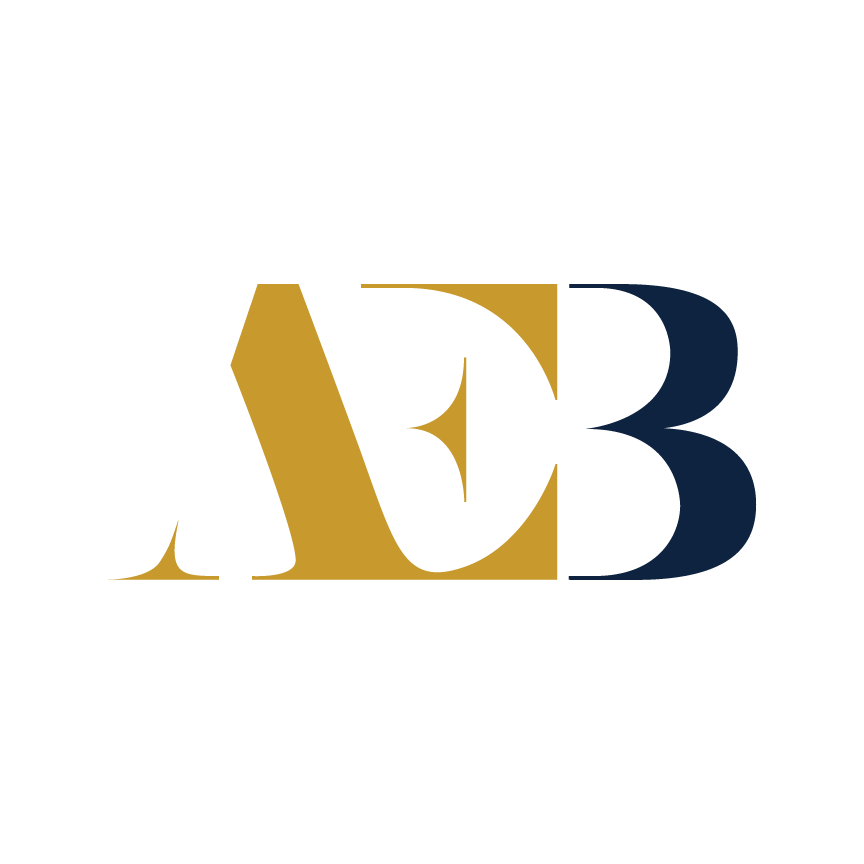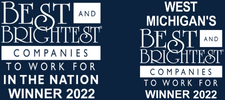Most people underestimate the complexity and level of involvement of the business and process of recruiting until they experience it themselves. How hard can it be to help a company find talented people in a well-defined industry? What’s the challenge in talking to someone about advancing their career?
We are partially grateful for this perception. It means we are providing our clients with exceptional service that seamlessly flows from beginning a search to the perfect-fit new hire beginning their first day at a new organization.
The harsh reality is that too many organizations find out mid-way through the recruitment process just how challenging it can be, especially when they aren’t completely sure where to start or how to progress.
If you have ever felt this frustration — or want to ensure that you don’t — this guide to the recruitment process, and specifically how to find your perfect-fit hire, is for you.
-
Discover the important reasons why every organization needs to develop a detailed recruitment process.
-
Learn the critical steps to creating effective recruiting solutions.
-
See what final pieces need to be in place before launching your own recruitment process.
Why Your Organization Needs a Recruitment Process
If we are going to share our methodologies, it is only fitting that we also share why we have developed them in the first place. And if you are going to consume our ideas of how to define and implement a recruitment process (especially if this requires a paradigm shift in your organization) you should definitely have an understanding first of why this matters.
Following are three primary reasons why a defined process should be part of your recruiting solution.
To reduce the risk of making a bad hiring decision
While there usually isn’t one single reason why bad hiring decisions happen, there is generally a central theme that focuses on a lack of planning and process development. The tell tale sign is an inconsistency in all parts of hiring.
Ask yourself or your team these questions:
-
Are you struggling to adequately compare candidates?
-
Do you find that potential problems aren’t being discovered during interviews or during other vetting opportunities?
-
Do the members of your hiring team evaluate candidates against the same criteria? Do you even know how each team member is screening and qualifying candidates?
-
Have you noticed that expectations can vary widely on timeline, objectives, needs or outcomes of your hiring process?
-
Do snap hiring decisions ever happen in your organization?
Beyond contributing to chaotic hiring practices, bad hiring as a result of not having a solid recruitment process can be a costly learning curve. Bad hiring decisions have a compounding effect, meaning an initial poor choice can trigger increased costs due to lost opportunities, wasted productivity and talent acquisition efforts, and even negative impacts to your company culture and brand recognition.
Developing a detailed plan for how your organization is going to source, recruit, interview, qualify, and eventually onboard prospective employees will reduce confusion, inconsistencies, and bad hiring decisions.
Learn more about the compounding costs of bad hiring decisions and how to avoid them from the start.
Structured recruitment processes decrease the time it takes to fill open positions
It may seem counterintuitive to say that spending additional time to develop a detailed, step-by-step recruitment process can actually help speed up the total time it takes to fill open positions, but trust us on this one. After all, our entire business model is built on a proven talent acquisition process.
Defining your recruitment process means that thought and intent have been put into the following key areas:
-
Dedicated Resources. A quality search process starts with identifying the specific individuals involved. So thought is given to who is part of the process, how they are participating, and at what stages they need to be actively engaged.
-
Qualification criteria. Before beginning any candidate search, all aspects of what your perfect-fit new hire will look like (meaning the skills and abilities they have) will be reviewed and defined. This avoids wasted time with unlikely matches later.
-
Sourcing strategy. Not all candidates will be actively pursuing your open opportunity. A detailed recruiting solution includes a plan for both active and passive candidate searches. This includes platforms used, methodology, advertising and marketing budgets, and messaging. Considering this before you begin avoids wasted efforts looking for the right people in the wrong places.
-
Interviewing process. A good recruitment process also includes detailing the interviewing phase as well. For example, determining what format interviews will be in, how many of each are needed, and who will be facilitating them.
Once you have a recruitment process in place, the various areas and phases only need to be reviewed and verified, not reinvented for each new hire.
There are many factors beyond your immediate control that impact the overall process and time recruitment searches can take. Developing an intentional recruiting solution will help you plan for what you can. And this is just as important whether you are managing a hiring process yourself or using a recruitment firm. It can be surprising when you start listing all the factors impacting time for search services, and specifically the time to fill positions.
A defined process offers the best way to achieve desired results
By definition, a process is a series of prescribed steps that are followed in order to achieve a desired result. For us this means a structured recruitment process is essential. A solid and detailed recruiting solution is designed so that each step builds on the previous one.
Skipping over steps or changing your order of operations once defined will only yield less-than-desired results, not to mention potential errors. On the lowest risk, least problematic side of the spectrum, not having a defined recruitment process can mean your search parameters become unrealistically broad (aka scope creep) and change so frequently that any boundaries to your search become meaningless. On the high risk side of the spectrum are increased costs, a drawn out search process, or even hiring no one at all to fill an essential role.
A recruitment process provides a systematic way of moving as effectively as possible from the point of having an open position to the point of having your perfect-fit hire begin their first day of employment. And without a recruitment process you can almost guarantee your hiring costs will be higher, the risk of making a bad hiring decision will be greater, and your time to fill will be longer on average.
Planning Your Recruitment and Hiring Processes
Talent acquisition is a process that requires a great deal of forethought and intentional planning. And it’s exactly why organizations build departments around the management of their human resources. It’s also why so many companies outsource recruiting and talent acquisition tasks.
Don’t panic though, with the right planning and strategic focus the entire recruitment process can seamlessly progress from start to finish. Here’s how.
Develop an active search strategy
Just like candidates can be passively or actively exploring a career change, organizations can embark on both passive or active searches. Although passive “searches” are a bit of a misnomer and are really just publicly shared opportunities. An active search involves directly reaching out and connecting with prospective candidates whether that is digitally, via phone, or even in person where possible.
While it is helpful to use a bit of both approaches, recruitment processes built around an active search strategy have the best results. The reason is that this approach builds a larger pool of candidates to potentially hire from. And the math is pretty simple. Expanding your search will expand the variety of skills you can attract. And the more skills you attract, the tighter your evaluation process can be.
Define your perfect-hire profile
Before you can start looking for your perfect-fit new hire though, you need to understand who that might be. In other words, what qualifications will they need to be successful in this role and therefore be “perfect” for your organization?
There are two sides of the same candidate coin at play here. Side A includes the criteria that most people naturally think of first: job title, education level, years of experience, and the like. We refer to these as technical competencies or the tools someone has. This list won’t identify how successful someone might be in the role you are hiring for. However, it does provide a framework for how to structure your search strategy. So consider the following:
-
Detail how the role you are hiring for might be described. List the titles, education level, and general responsibilities this person might have.
-
Identify the primary and secondary companies, customers, and supplies within your industry where this potential new hire might be employed now.
-
Begin to branch out and list the groups, organizations, and networks this ideal person may belong to or be connected with.
-
Finally, confirm your geographic boundaries and if this person needs to be in-person or possibly remote. Likewise, consider if you are open to someone relocating and what that might look like for your organization.
Side B of this ideal profile coin focuses on the core capabilities or talents of your perfect-fit hire. This means defining:
-
How their skills align with your organizational goals and objectives
-
How this role needs to interact and work with other members of your organization
-
The specific projects and tasks that will be accomplished
-
What success in the role looks like
There can be a subtle difference between competencies and capabilities. Think beyond just where to begin your search and what qualifications might get someone hired, and toward what might help someone succeed. This simple shift in focus will make a huge difference.
Create a consistent process
Hopefully by now you are noticing a recurring theme. A successful recruitment process requires detailed planning to develop an intentional series of actions that are easily repeated. And this is done for two very beneficial reasons.
First, structured processes ensure that each candidate’s experience is the same and that hiring managers have a consistent method of evaluating them. Second, a structured process (and particularly the interview) doubles the likelihood of predicting a high performer over an unstructured format. We’ll explain more about a structured interview process in a bit, but at this phase, your goal is to finalize the following:
-
What format do you want/need to conduct your interviews and how does that change as you get closer to making an official job offer?
-
How many interviews will you need to fully evaluate candidates?
-
Who will be involved with each interview?
-
When do you need/want to have your new hire start with your organization? Can you realistically schedule all your needed interviews and analysis during that time frame?
-
Do you require any additional testing or evaluations? How does this fit into your process and time frame?
-
Who is making the final hiring decision?
Talent acquisition encompasses a lot of moving parts. This is exactly why planning is essential to developing a complete recruitment process for your organization.
Putting Your Plans Into Action
Knowing who you are looking for, where you might find them, and how your process will move from one phase to the next is only half of your entire recruitment process. The second half is putting your plans into action.
Spread the word, you’re hiring!
Remember that while passively posting your openings is important to do, to really attract the right candidates you need to take an active approach, even here. Take a look at that list of tools and talents again for your desired candidate profile. Your list of competencies (the tools someone possesses) is going to be very helpful at this point.
Where are candidates that match this profile most likely to be online? What tone would resonate most with them?
Whether you create a passive social posting or a proactive, highly targeted social media ad, you need to convey a compelling reason for why someone would want to leave their current role to join your company. Further, this needs to be done in a way that allows them to envision themselves as part of your team.
But don’t overlook your most valuable tool and method of communicating your open position. Your current employees! This is a group of people who know you best and therefore will have the most influential voices in attracting new talent to your organization.
Stay focused and on track
With your sourcing and recruitment efforts in full effect, you should have a consistent stream of candidates for you to consider. But what does your stream of candidates look like? Are you being inundated with resumes to review or is your inbox frequently empty? And what could either extreme mean?
While your goal is to create as large a candidate pool as possible, if you are getting or finding too many candidates that just are not qualified, your search parameters are too broad. Be more specific with the capabilities your perfect-fit hire should have and detail how success will be defined.
However, if your candidate pool is looking more like a drying puddle, you likely have your parameters set too tightly or have a misalignment in one or more areas. Review where you may be able to relax or expand your desired criteria such as more years of experience in lieu of a degree or expanding your geographic area.
Just like a poorly planned recruitment process, a candidate search that is out of scope can cause you to miss out on opportunities to connect with great talent, increase your time to hire, and even increase business costs with unfilled positions.
Structure your interview
Finally. All of your diligent planning, reviewing, and adjusting throughout your recruitment process have brought you to the interview stage. But don’t relax just yet. Strong recruiting solutions also pay close consideration to how you are going to interview your eager candidates.
While you can find an endless source of suggested interview questions and styles, they all fit into one of two categories: structured or unstructured.
Structured interviews mean that every candidate experiences the same process and each one is evaluated against the same preset criteria. Unstructured interviews have the end goal in mind, to hire someone. But how both the interviewer and candidate arrive at that point is completely spontaneous.
At this point, it should come as no surprise that we are fully advocating your use of a structured interview method. However, allow us to share our rationale.
Structured interviews:
-
Provide greater consistency
-
Ensure key questions are asked
-
Create an easier way to access individual capabilities
-
Establish clear comparisons between multiple candidates
-
Require less training for interviewers
-
Allow for faster hiring decisions
So how do you create a structured and consistent interview for every candidate you connect with?
Refer back to the profile you created for your perfect-fit hire. That time and effort you spent at the beginning is not only useful in marketing your opening and sourcing potential candidates, but especially now when interviewing them.
Their competencies (title, education, years of experience) was helpful in actively sourcing and recruiting your candidates. Now your goal is to evaluate their capabilities against what you need someone in this role to accomplish.
One approach to accomplish this is with a performance-based interview. Candidates are asked a series of “how would or did you handle this situation” type questions. The purpose is to use past behavior to help predict future performance.
Another style (and our preferred method) is a top grading interview where candidates guide the interviewer through their resume from past to present. This approach showcases candidates’ natural strengths and weaknesses while fully displaying their drive, capabilities, skills, and personality.
Managing Your Recruitment Process
A successful recruitment process requires attention to detail, plenty of pre-planning, and dedication to your finalized plan. And it most definitely is not something you can casually meander your way through.
When designed and implemented well, a recruitment process will reduce your risk of making poor hiring decisions, decrease your time to fill, and lead you to your desired talent acquisition results.
However, impactful recruiting solutions — ones that will provide you the results you need — requires solid intent on your part. This means developing an active search strategy for how you will approach sourcing, recruiting, and interviewing candidates. And it all starts with defining the skills and talents your perfect-fit hire should possess.
Having a consistent process will allow your organization to confidently promote your opening with clear messaging and keep you focused on your hiring goals. Further, it creates a repeatable framework for interviewing candidates that makes evaluating your options more productive.
Have more questions about your current recruitment process or hiring needs? Contact us today! We’re happy to help.


.png)
.png)
.png)
.png)
.png)


